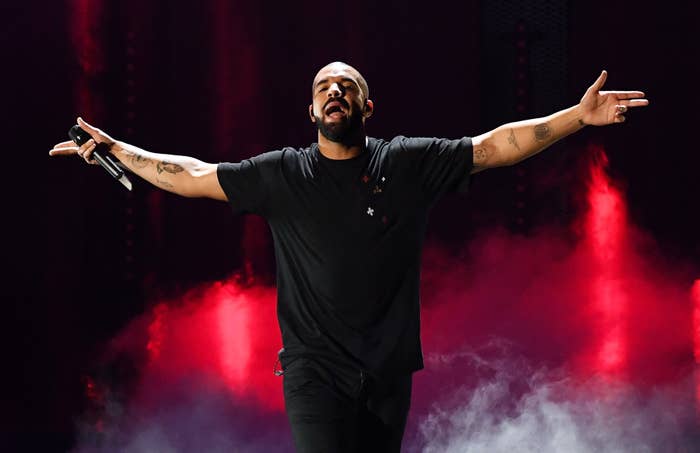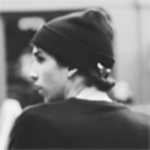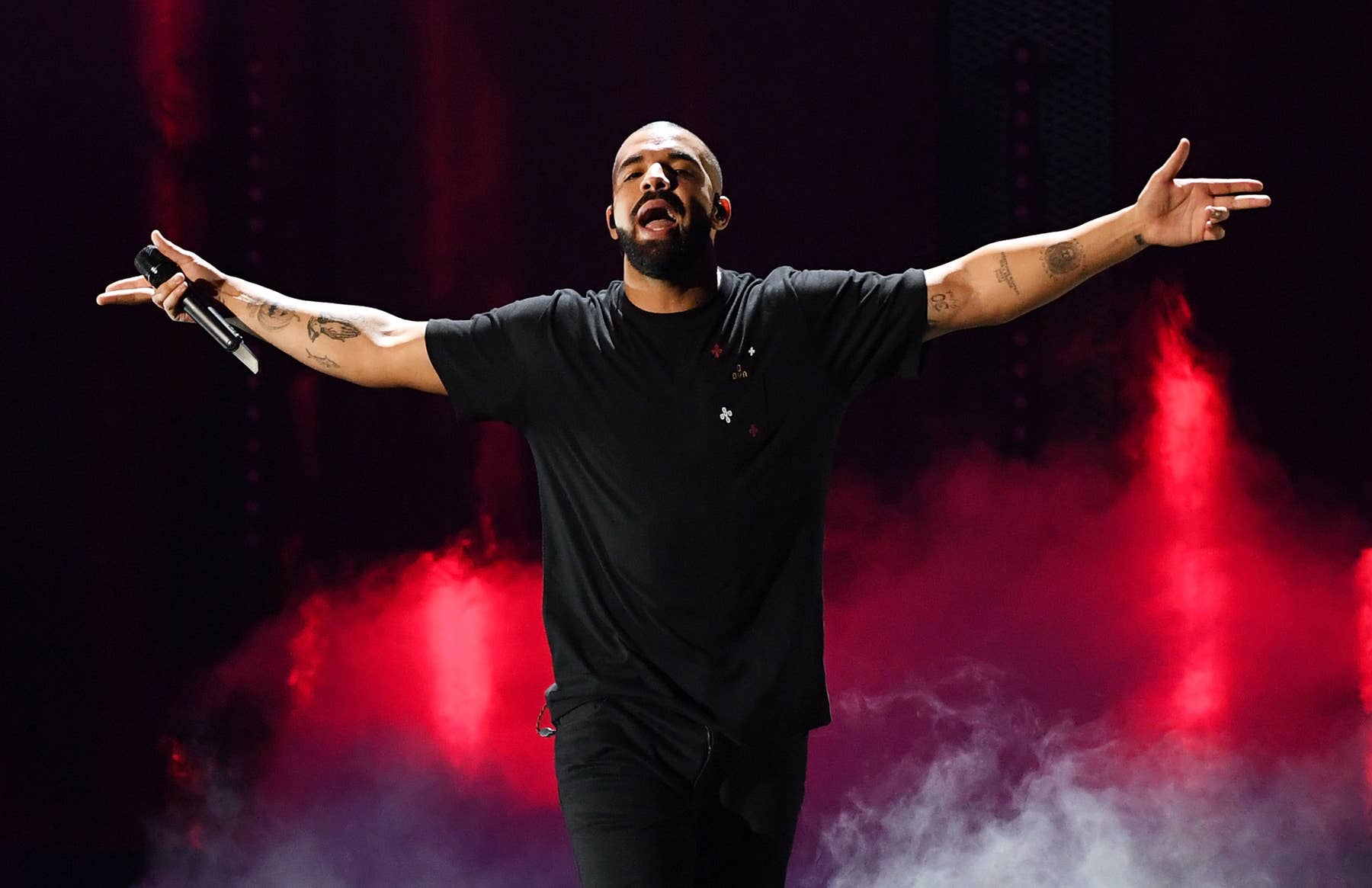
It’s become routine by now. In the middle of the night on any given weekend, you might get a text from a friend that says some version of: “Oh shit, new Drake.” Then you scramble and figure out if he decided to put it on Apple Music, SoundCloud, or YouTube this time around.
This Saturday night, the text popped up at 11:23 p.m., alerting me to the news that Drake had dropped two songs on SoundCloud, “When to Say When” and “Chicago Freestyle,” along with a music video on YouTube. Without hesitation, I excused myself from drinks with my girlfriend and friends at a bar in Chinatown, and sat in a disgustingly small bathroom stall, listening to Drake’s latest two-pack on my phone. It’s not glamorous, and I’m not entirely proud of it, but this is new Drake we’re talking about. Late-night surprise releases from this guy feel like holidays at this point. Everything else can wait.
This time, the songs were bundled with a music video that shows Drake defiantly running around New York City and making a stop at Marcy Projects in Brooklyn, where he was spotted in early February. The tracks themselves include a couple nods to other rappers, including a sample of JAY-Z’s “Song Cry” and an interpolation of Eminem’s “Superman.” After running these songs back a few more times at an irresponsibly high volume in my apartment at 2:30 a.m., I wrote down some first impressions of Drake’s latest loosies.
“When to Say When” is a ‘life talk’ song from Drake
During his December interview with Rap Radar, Drake spoke about an unreleased song that he had sent to hosts Elliott Wilson and B.Dot before their conversation. He referred to it as one of those tracks where he’s “just givin’ those life talks” and joked that he sent it to them “just to show I can still rap.” That song is “When to Say When,” and it lives up to his description. At this point in his career, we all know Drake can make any kind of song he wants, but his core fans still have a soft spot for the times he gets introspective and raps for minutes at a time without worrying about hooks. So on “When to Say When,” he makes use of the format to talk his shit, flexing about chart success and comparing himself to Michael Jackson. He also starts to figure out how to rap about his son in a more natural way, dropping lines like, “I will split heads and break necks for my little man” and “Baby mama fluke, but I love her for who she is.”
Earlier in his career, these “life talk” songs sometimes suffered from getting a little too mopey for their own good, but on “When to Say When,” he delivers everything with more swagger, even when he’s addressing vulnerable aspects of his life. The best life talks always come from people who are confident with their own place in life—or at least from people who sound confident—and that’s what Drake pulls off here. Drake has transformed himself into rap’s Terminator in recent years, but he’s also somehow figured out how to harness his new indestructible, on-top-of-the-world perspective and use it to make his introspective songs even better, instead of completely falling out of touch with this side of himself. After seeing so many artists become completely unrelatable once they reach this level of fame, Drake’s ability to adapt, while still making his core fans happy, becomes even more remarkable. This feels like watching an underdog team earn an upset win in the first round of a basketball tournament, only to use that confidence to get even better and knock another team in the mouth the next round. Drake’s in championship mode.
Drake is thinking a lot about his rap legacy
Drake knows the importance of presentation. It’s no accident that he filmed this video in New York City, made a stop at Marcy Projects, sampled a JAY-Z song, and interpolated lyrics from Eminem’s “Superman.” It’s not a fluke that, in the lead-up to an album that will likely include a lot of pop songs, he’s made sure to drop loosies in which he focuses intently on one thing: rapping. Drake’s commercial success is undeniable by now, and he’s become the biggest pop star in the world. But you get the feeling that he still cares about earning the respect of core hip-hop fans who still don’t fully respect him as a rapper. These non-album loosies were uploaded to SoundCloud and YouTube, which means they won’t earn him much money. And they’re not melodic hits that will go from SoundCloud to No. 1 on Billboard, like “Hotline Bling” did. But they’re here to serve a purpose. To borrow Drake’s own words, they’re “to show I can still rap.”
By presenting himself in hip-hop’s birthplace, New York City, and posing by Marcy Projects, Drake is taking very deliberate steps to appeal to a certain type of traditional hip-hop fan. He also appears to be very aware of his place among rap’s pecking order right now, as he dedicates large chunks of “When to Say When” to address the competition: “How you plan to make it to the top by just fittin' it?/How you plan to take a nigga's spot by just givin' in?/How you gon' treat this shit like you gon' get to live again?/How you gettin' hype off one hit? Do that shit again.” As we enter a new decade, it’s very clear that Drake is focused on maintaining his place at the top of rap.
The importance of Drake’s duality
Drake is the master of the two-pack. He’s the kind of artist who can do everything well, but understands that trying to do all those things in one song is a mistake. So, he drops two-packs and makes double albums instead. By releasing “When to Say When” and “Chicago Freestyle” at the same time, he’s able to show two sides at once: the confident rapper who can hit you over the head with a three-minute onslaught of bars, and the emotionally in-tune storyteller. During his Rap Radar interview, Drake explained that he’s one of the only rappers who has to satisfy two totally different audiences at once. “I have to do two things every album,” he said. “I have to give the people that like to hear the singing enough to hold on to, and I have to give LeBron enough bars.” The way in which he approaches this duality will become extremely important for the rest of his career, and two-packs like this are a perfect way to handle it.
Giveon introduces himself
Seconds into “Chicago Freestyle,” a hauntingly beautiful voice delivers the extremely Chicago line: “Two thirty baby, won't you meet me by The Bean?/Too early, maybe later you can show me things.” On first listen, most people assumed the voice was coming from Sampha, who Drake previously collaborated with on “The Motion.” But it turns out “Chicago Freestyle” actually features a young artist named Giveon, who tweeted: “That’s not Sampha!! That’s me!! Spread the word!!” For Drake fans who are just now getting introduced to Giveon, he is an up-and-coming singer from Long Beach, California, who has been turning heads with stop-you-in-your-tracks vocals on songs like “Like I Want You” and “Heartbreak Anniversary.” Get familiar!
Overall thoughts
Sure, it gets a little tiring to read a million tweets that say, “Drake really the GOAT, for real,” every time he drops something new. But it’s also becoming more difficult to argue against that sentiment. After a first listen of Drake’s latest two-pack, the main takeaway here is that he’s fine-tuning his old tricks to make music that’s getting even better as the years go on. By abandoning traditional release strategies, he has figured out ways to share music that suits him instead of adapting to the industry, and we’re getting great music because of it. It would be a waste of time to try and draw conclusions about the direction of his next project from loosies like this, but if these are the songs that didn’t make the album, it’s exciting to hear what he’s saving for it. Drake’s charged up right now, and these songs just raised our expectations for his next album.


